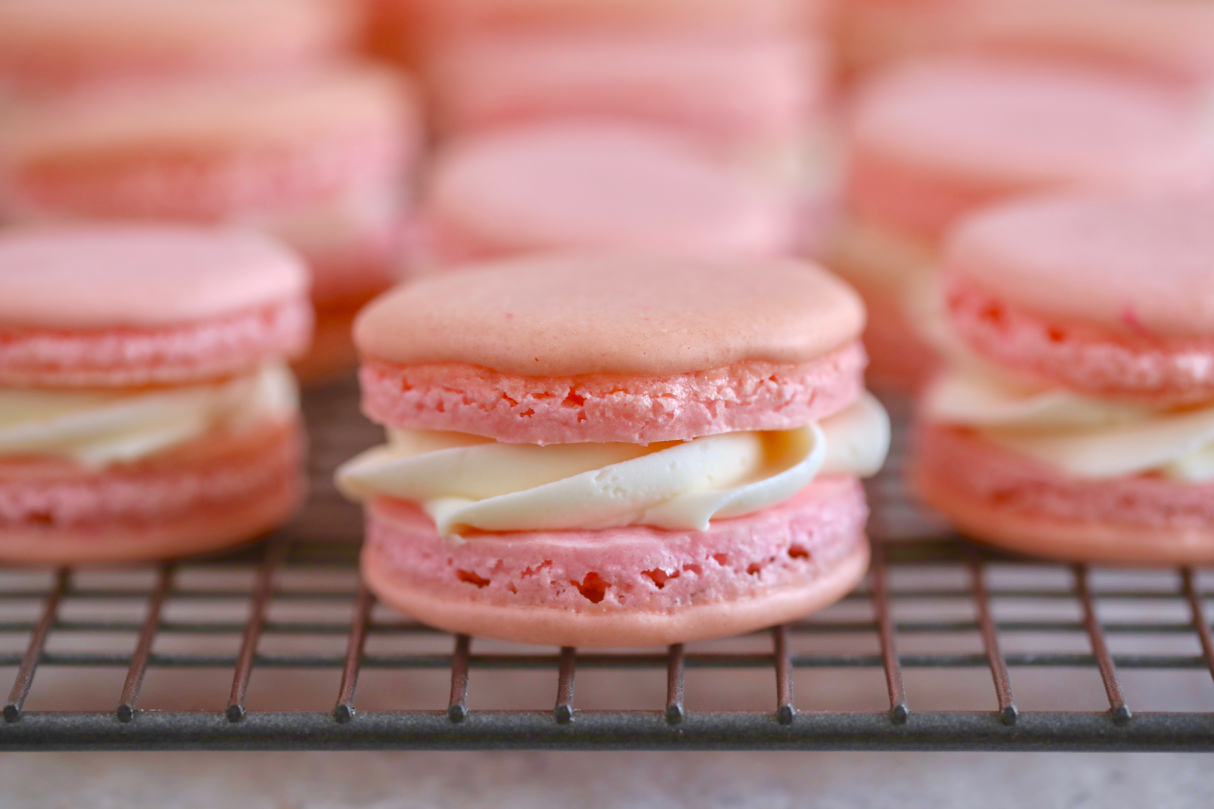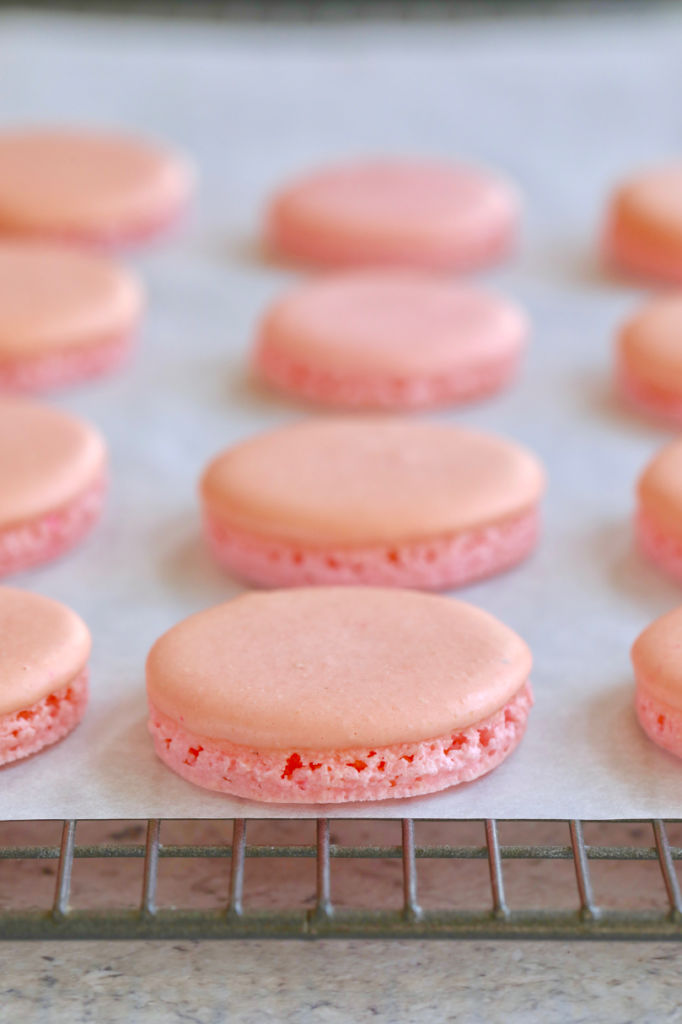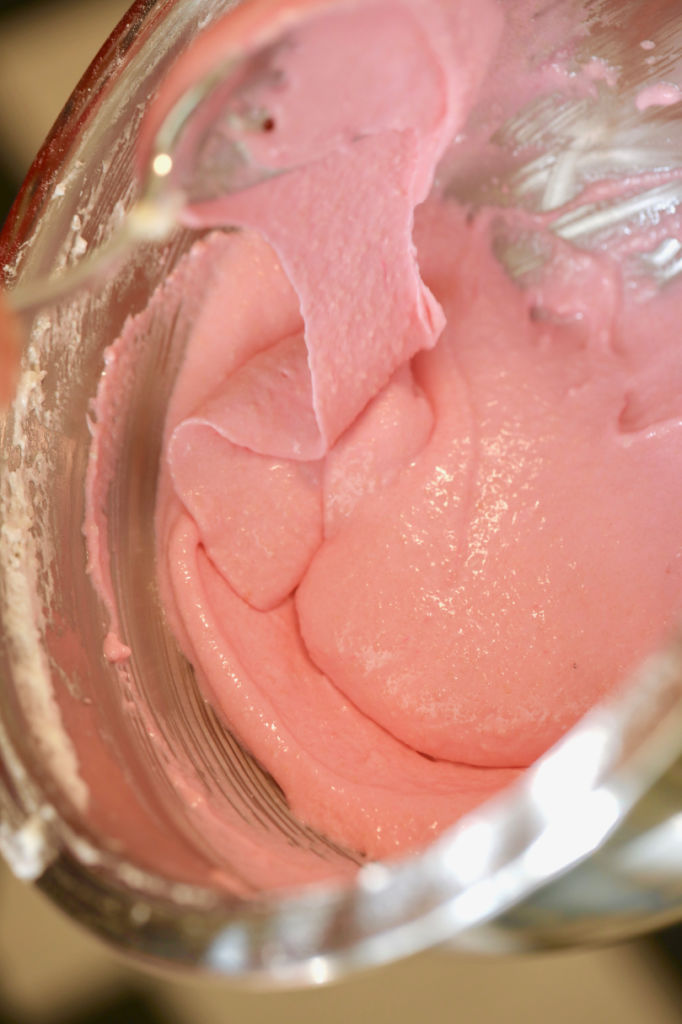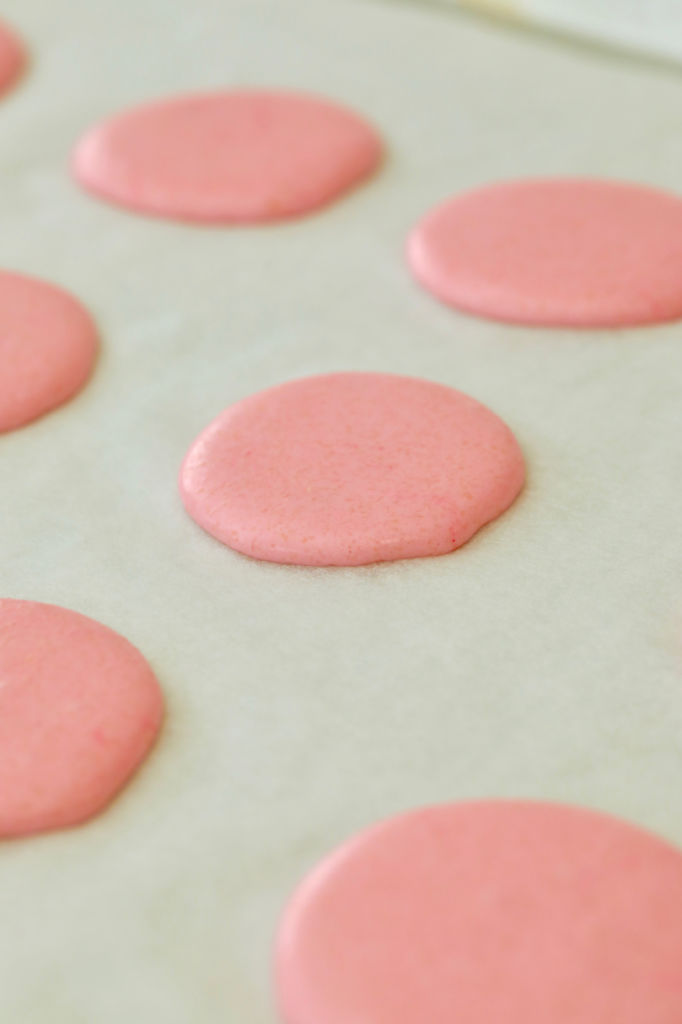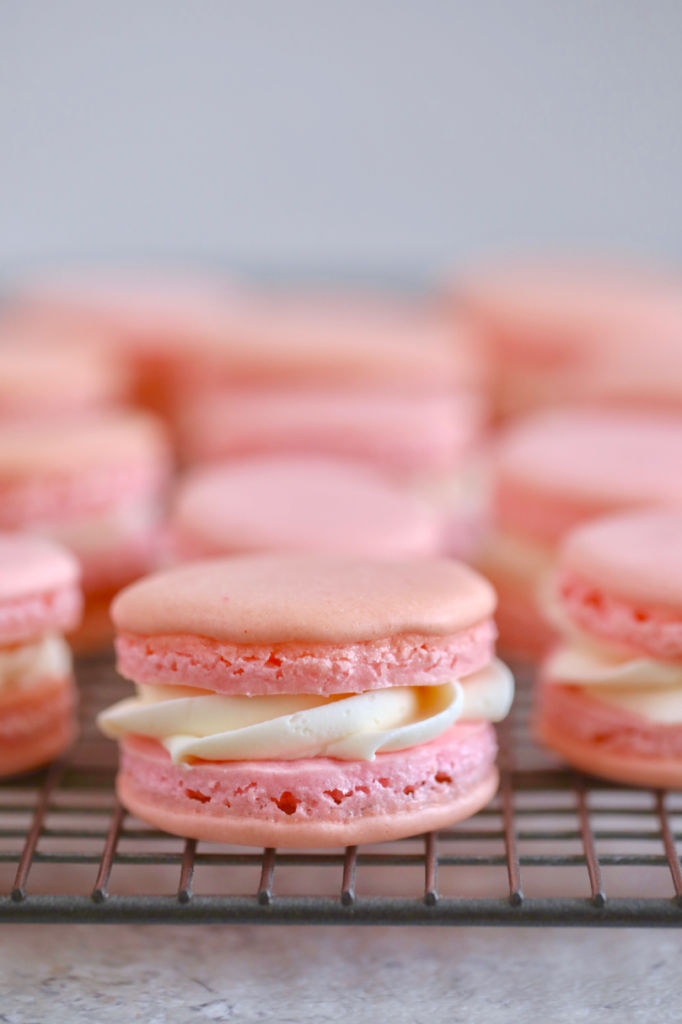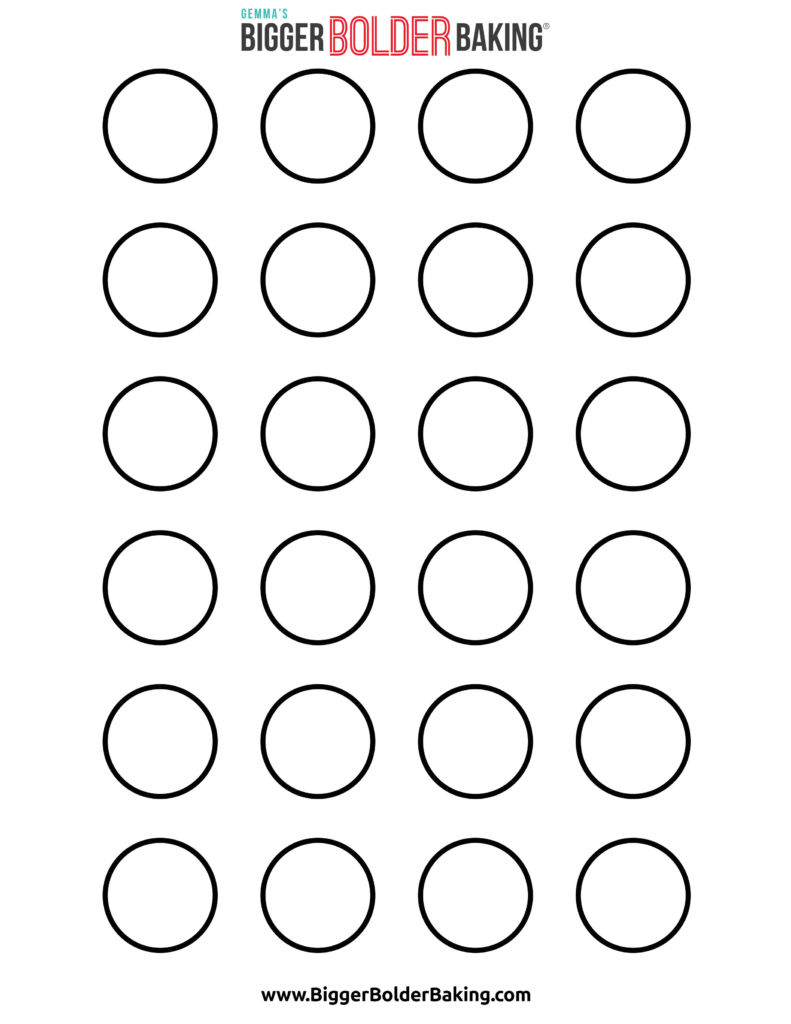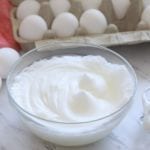Hi Bold Bakers! Making French Macarons can leave you in a panic, I get it! It took me a few tries to get the hang of it but I didn’t lose hope and eventually, I nailed it. So, I decided to pass the process onto you and guide you through one of the most notoriously difficult recipes out there, with the simplified methods and steps I follow to ensure perfect macarons with practice, over time. Already have an account? Plus, I pulled together a list of the 7 Most Common French Macaron Mistakes Everyone Makes and made a video on it to make everything even easier on you! Below you will learn about what equipment is best, important techniques used in macaron making like ‘rappé’ and ‘macronage’ and the top ‘Tips and Tricks for Macaron Making’. If you are brand new to baking and need to know the basics like how long you need to whip your egg whites, I’ve got you covered.
Equipment Needed for Successfully Making French Macarons
How to Make French Macarons
When it comes to making this recipe, following the steps is a must. Here’s a quick look at all the things you must do! A lot can go wrong with so many steps so let me do my best to help you avoid as much heartbreak as I can!
Here Are The 7 Most Common French Macarons Mistakes And How to Get Past Them:
1. Cracked Macarons
There are a few reasons why the tops of macarons crack. Under mixing could result in too much air in the batter and, while they are baking, the air bubbles expand in the oven and crack the tops. This is another reason why it is important to tap your pans (rappé) after piping the macarons, to remove any extra air bubbles. Another reason for cracking would be if they didn’t rest long enough to develop a proper skin. The longer you rest the macarons, the thicker the skin that develops. When baking, if the skin is too thin, the heat could burst through and crack the tops. Proper skin development ensures that when baking the heat pushes downwards (to create the feet) rather than upwards (which could crack the tops).
2. My French Macarons Don’t Have Feet
The main reason would be that the batter is too wet and runny. That is due to a few things: the meringue wasn’t dry enough when folded in, it’s a humid environment and/or the batter was overmixed. The viscosity of the batter is very crucial to ensure proper macaron making. Remember, you want that lava-like quality. [ Struggling with making bread, too? Find out what the 7 Most Common Breadmaking Mistakes are! ]
3. My Macarons Are Flat
Overmixing can result in flat macarons. After the dry ingredients and meringue are fully incorporated, macronage is the folding technique that ensures the proper batter consistency. Slowly fold the mixture using a thin metal spoon until it loosens a little and becomes smooth. When properly done, the batter should be shiny and flow like lava off the spoon. To test the consistency, gently lift some batter over itself in a slow stream. Once the ribbon of batter disappears into itself after 15 to 30 seconds then you’re ready to pipe. Do not overmix because deflating all the air will result in sad macarons. It takes practice to get this technique right.
4. Not Drying Your Macarons
Leave your shells in a dry area to dry, so that when you press the surface it is dry and not sticky. Resting the piped macarons allows for skin to develop on top of the cookies. Resting time can range anywhere from 30 to 60 minutes depending on your kitchen. You’ll know your macarons are ready to bake when you lightly press the surface and it’s dry and not sticky. After resting, they should look matte and not shiny like when you first piped them. The “skin” helps create that hardened shell that’s iconic of the macaron. Also, without proper “skin” development, when baking, the heat will escape from the top rather than from the bottom which creates the other iconic feature of the macaron — the “feet”.
5. Making Macarons When It’s Humid
Although possible, it would be rather difficult to bake macarons in a humid environment. Humidity is macaron’s enemy. If the environment is humid, it can affect the resting stage, resulting in no “skin” and therefore no hardened shell of the macaron when baked. Humidity can even affect the moisture in the meringue so it might be hard to whip super-stiff egg whites. Perhaps use a dehumidifier in the room when you are baking macarons during a rainy or humid day if you must!
6. Hollow Macarons
This can happen for a few reasons, like overbeaten egg whites at the beginning can result in hollow macaron shells. Also, shells resting for too long during the drying period can result in hollow macarons. A 40-60 minutes resting period is usually enough. Lastly, the oven temperature set too high can prevent the insides to set, causing the meringue to collapse when the shells are taken out of the oven.
7. Uneven Feet
Your oven temperature is possibly too high. It’s best to bake at a lower temperature (285 to 315°F [140 to 160°C], depending on your oven) for a longer period of time so that the shells rise slowly but consistently. Some ovens have poor air circulation, making the temperature rise excessively, so it may help to keep the oven door slightly open (with the help of a wooden spoon) throughout the cooking process. Also, you can double pan when you bake as this step helps ensure even heat distribution, thus level feet on the bottoms of your cookies.
More Tips & Tricks for Making Macarons:
Make Some of My Other Favorite Macarons!
If you want to try more macarons, make sure you try my:
French Macaron Pots of Gold French Macaron Jelly Donuts
Download the Template!
Don’t forget to follow Bigger Bolder Baking on Pinterest!
